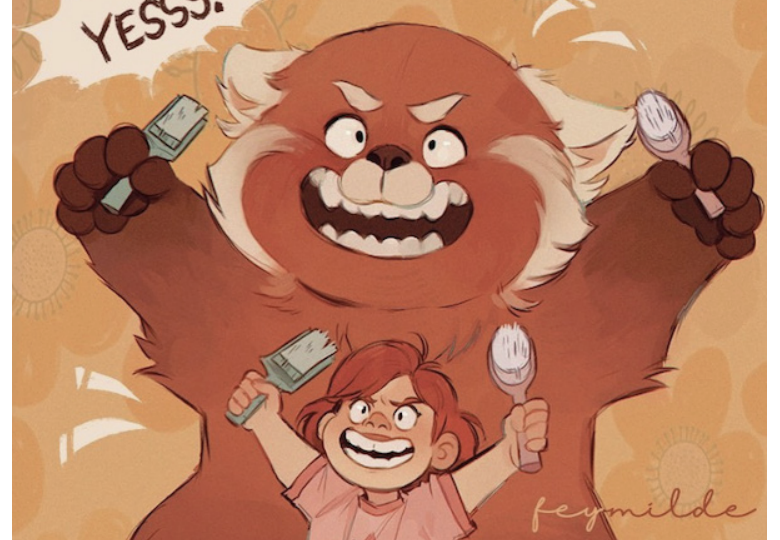*Before reading this article, be aware that spoilers and major plots of the film will be discussed. If you have not watched the film, it may be best to wait to read this article.*
Disney’s new animated film, “Turning Red,” is the studio’s first film to be written and produced by women while smashing taboos many Disney viewers didn’t foresee. As a result, the film’s release has prompted various opinions due to the content that is discussed and shown.
In the film, the main character, Meilin “Mei” Lee, is a 13–year–old girl experiencing changes in her body as she enters puberty. One morning she wakes up and finds that she has transformed into a red panda. When her mom realizes what has happened, she brings her daughter an assortment of menstrual pads, a warm water bottle and ibuprofen.
From that point in the movie, Mei learns why she has transformed into the red panda and has to figure out how to navigate through life with this new aspect in her life. Throughout the movie, Mei’s three friends are supportive and embrace the pandemonium that has arisen in their friend’s life.
“The film tackled the growing pains of adolescence in a really fun and relatable way,” said Jasmin Peguero, a sophomore English major. “It’s really important to have an idea of what a healthy experience with puberty looks like and I feel like ‘Turning Red’ does this.”
With the film’s release, many parents criticized scenes that hinted at young girls getting their period. According to USA Today, some parents were caught off guard by the scene of the mother bringing her daughter pads.
While these critics did not feel that this topic is something that should be shown or discussed in a children’s film, there are many families who do not share adequate or useful information concerning periods with their children. Whereas some parents may believe this film is inappropriate for children, this film could be used as a tool to start a conversation.
“Considering how most schools don’t talk about things such as menstrual cycles and sex ed as deeply as they should, I didn’t see a problem with the movie,” said Makayla Jenkins, a sophomore mass communication major. “I think having it tucked in little segments of movies would really make not only younger children, but people as a whole become more comfortable with talking about things they should already be comfortable with.”
At the end of the movie, Mei begins to accept her “red panda” despite the constant push from her family to keep it hidden from the world. This aspect of the film is empowering for the young audience, and even adults, as they see that the changes in the body are not a bad thing, even if that is what society is saying.
Overall, the film is one that addresses puberty and the changes of the body that children go through at some point in their adolescents and can be a great tool to start conversations between parents and their children.
The film works just as well even if younger children do not understand the deeper meaning of the message because it remains an entertaining film about a girl who transforms into a panda. The film not only gives insight into the body’s changing, but it also encourages children to embrace their changes rather than feel ashamed of something that is completely natural.




